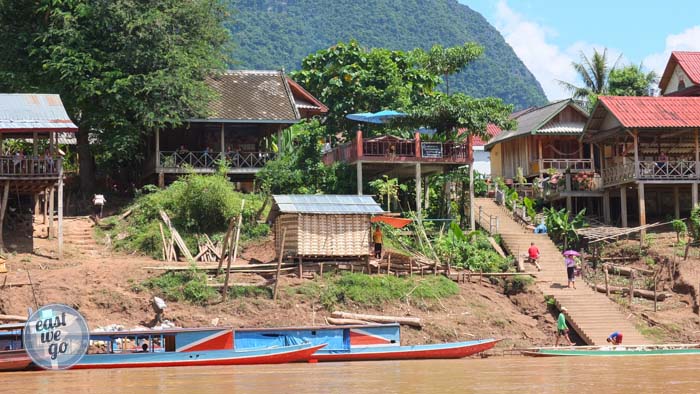
A village with practically one road, although it’s hard to call it a road. It more of a wide path, not paved, not even with some gravel. But they don’t need a road, as the village is not connected with any other city. You can get here only by boat.
It’s a peace oasis, a place that hasn’t changed much for years, except for a couple of new “hotels” and restaurants opened and 24h electricity introduced. There are dozens of chickens and children running around and the adults rest in front of their houses. The time has stopped.
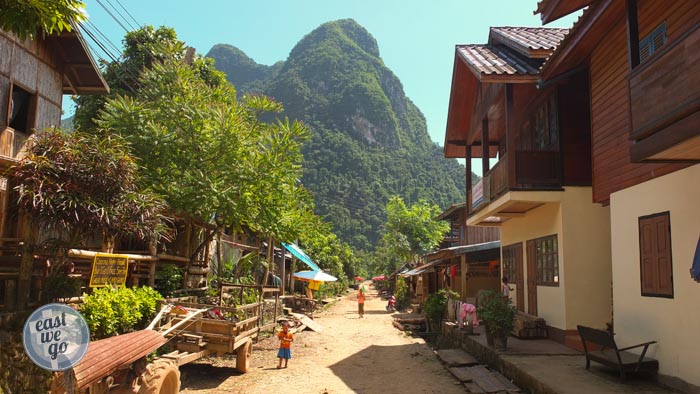
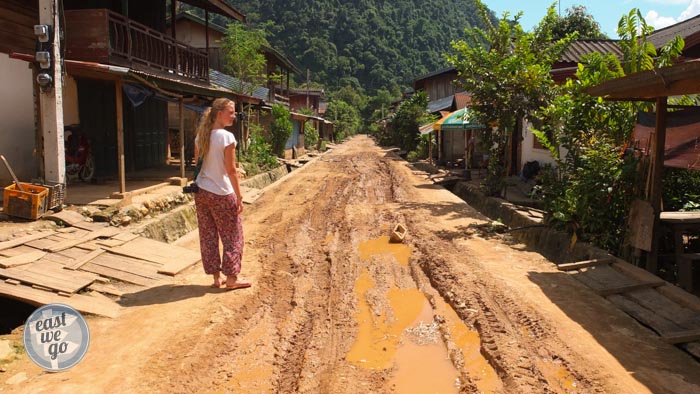
My best memories are from a lazy day spent on a hammock with a book in front of our hut and a delicious soup for one dollar eaten with three new fellow travelers. We were sitting there, five of us, each from a different country, on a different stage of long journeys, probably adventures of our lives, almost without talking, because none of us wanted to have “small talks”, the same ones you make in every popular backpacker hotel. There was nothing awkward about it, though. I just think we were enchanted by the quiet and peaceful atmosphere of the town.
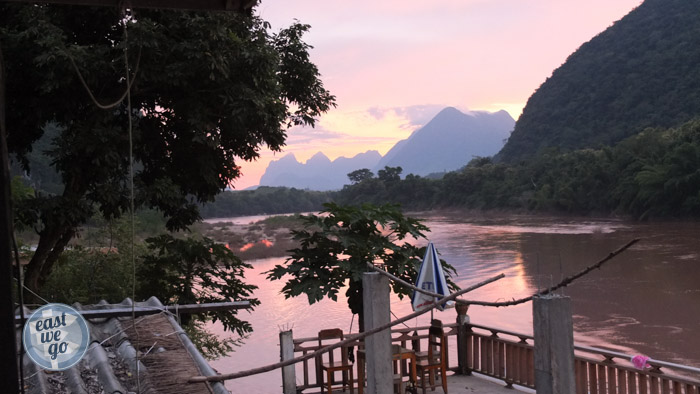
Our bungalow belonged to a family of a young woman who married a traveler from Sweden who was passing through the village 4 years ago. I don’t know details of their story, but I know that they live now with three kids in the family house of the girl. The man moved from a super modern European country to a tiny village in the middle of a jungle, to which you can’t even drive. He lives in quite unusual conditions in a very unusual place, but who am I to judge his choices. He looks happy and his children running happily around is only a proof of it.
As you may suspect, in a town with one street there isn’t much to see besides the mandatory temple that you can find everywhere in Laos. However, you can go for trekking to one of the neighboring villages. There the time really has stopped.
We woke up early in the morning to avoid walking in the strongest heat. Following a map drawn by the Swedish guy we left Muang Ngoi and went along the path into the jungle.
After 20 minutes we passed a small cave by a river, we decided though to leave the swimming there for the way back. On the way to the first village we had to take our shoes off a couple of times and wade through a couple of streams (or maybe the same one, but meandering a lot). The path is rather flat, but the views are stunning: bright green rice fields and orange limestone cliffs.
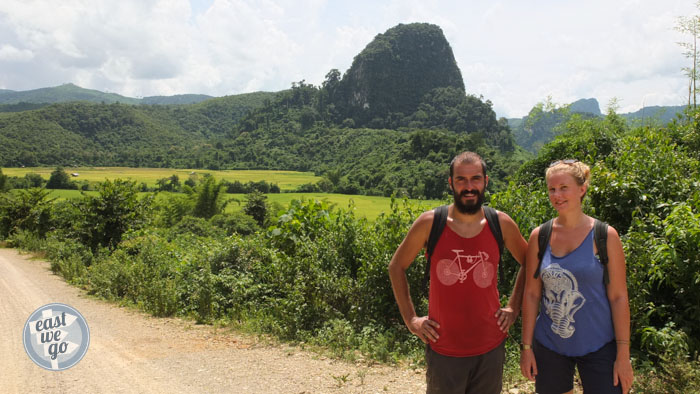
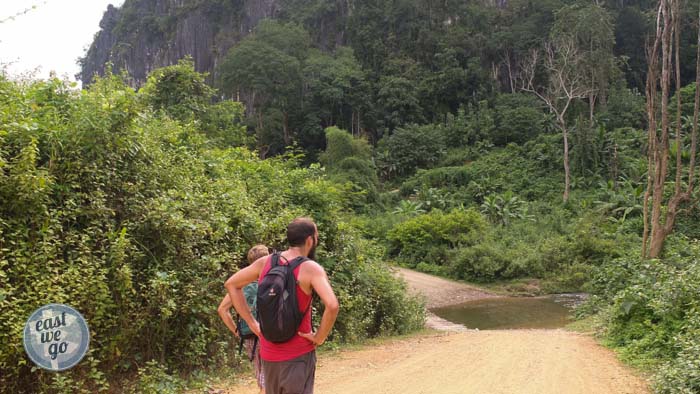
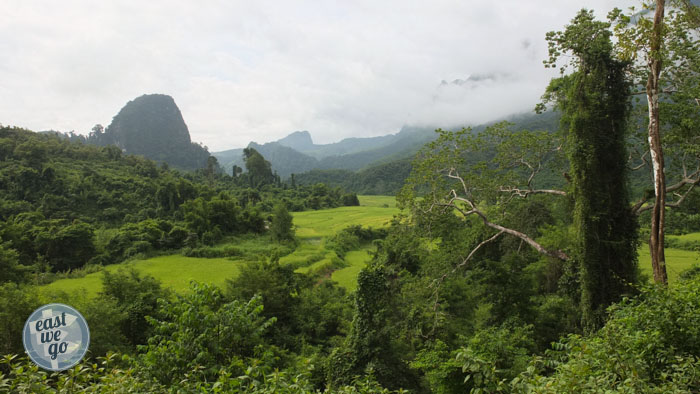
One man decided to go to the village with a small truck. He got stuck in a mud and although we managed to push him out of it, on the way back we saw him being stuck again and this time we don’t know if he managed to get out of it. After an hour or so we reached the first village of Hoy San. It’s incredible how people still live. Wooden huts on poles with thin walls made of bamboo leaves, one or two open showers for the whole village. No divisions, fences, chickens run along with pigs, dogs and cats.
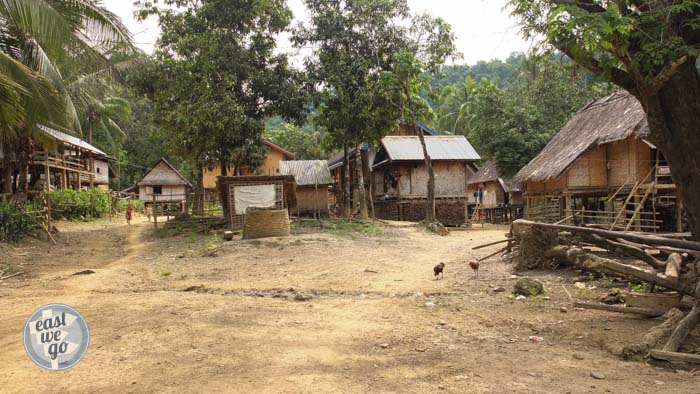
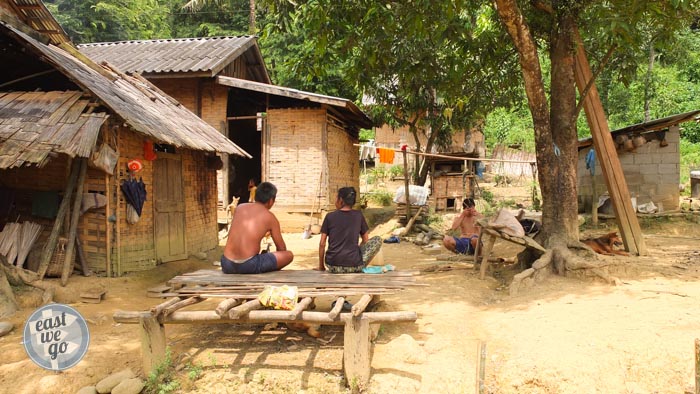
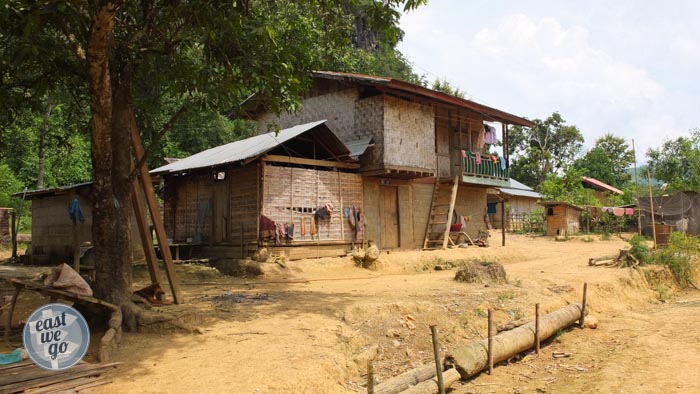
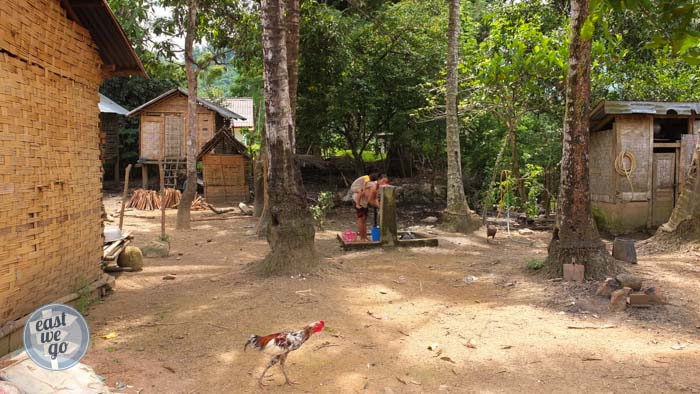
Next, we headed to the second village of Nakang. One hour later, after a walk through a more hilly path we got to a similar village, maybe a little bigger. Peace and quiet, some children bathing in cold water and an old man making a bamboo basket. It was already midday and it was getting very hot. We decided to split, our friend, Lolo, continued to the next village, we went back. A long expected swim in the cave was not very attractive as the water was very cold and shallow and I had to swim in my clothes, because all other local people didn’t get undressed so it felt weird to strip to a bikini.
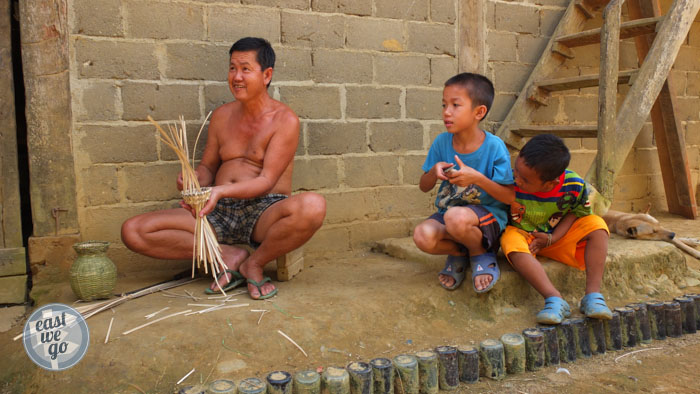
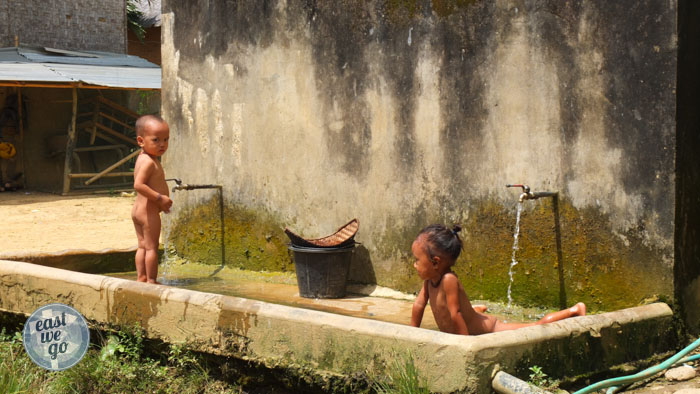
Practical information:
Transport:
Boat from Muang Khua to Muang Ngoi: 150 000 KIP per person
Boat from Muang Ngoi to Nong Khiaw: 25 000 KIP per person
Accommodation: Simple wooden bungalow with a view over the river on the left side from the place where the boat stop: 40 000 KIP
Trekking to the villages: entry ticket to buy next to the cave: 10 000 KIP. You need at least half a day to visit two villages, full day to see more. Take some water with you, as there is little shadow and the heat is quite intense. In the villagess don’t count on cold drinks.
In Muang Ngoi there is no ATM, so take enough cash with you.
Magda
 East We Go | Travel blog Travel blog about our adventures around the world
East We Go | Travel blog Travel blog about our adventures around the world
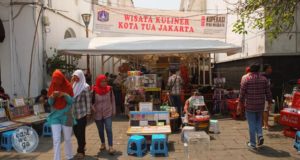
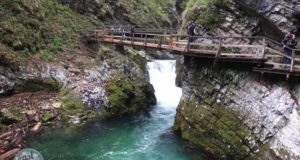
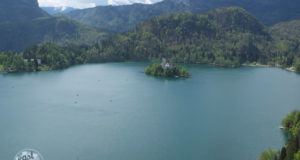
Nunca esteve nos meus planos visitar o Laos, mas ultimamente tenho visto tantos posts, reportagens na televisão de lá, que estou começando a pensar a respeito. Ótimo relato e fotos. beijos =)
Paisagens espetaculares que vejo neste post! Incrivel como estas pessoas vivem, em casas de madeira, mas estas viagens são boas para entendermos que nós europeus, somos privilegiados relativamente a certos padrões de qualidade de vida!
É fabuloso conhecermos locais assim. De repente parece que entramos num sítio onde o tempo parou, nada mais existe para lá desse local. E aí encontramos os puros de espírito, onde um sorriso vale tudo. Obrigada pela viagem!
Conhecer esse tipo de lugar é o que mais me atrai em viagens! E quando falou sobre o silêncio entre os viajantes que lhe faziam companhia no hostel, fiquei com inveja, pois sinto falta de mais momentos de introspecção e reflexão nos hostels em geral! rs
As fotos estão lindas, assim como sua escrita é muito agradável! Parabéns!
Beijos
Ótimo artigo! Não conheço Laos, mas ao ver este tipo de lugar dá uma baita vontade de conhecer! Adoro cidades menores e autênticas! Obrigado pelas dicas!
De uma certa forma ver aldeias assim, perdidas no meio do nada, também lembram alguns cantos do Brasil. Muito bonitas as fotos e ver essa vegetação luxurejante. Com certeza uma boa dica para quando eu for praqueles lados do mundo.
Na minha última viagem ao Sudeste Asiático não tive tempo de visitar o Laos (acho que cortamos pois o visto era complicado na época). Ficou pra próxima viagem e espero que seja em breve!
Quero muito conhecer Laos, adorei as fotos e o relato serve de inspiração, sobretudo a história de alguém que “larga tudo” e vai viver para um lugar assim. 🙂
Que post mais inspirador! E que experiencia fantástica! Este é um dos países que estão no topo de nossa lista de desejos! Obrigado pelo post!
Olá Itamar. Obrigado pela mensagem. Fique atento aos próximos artigos sobre a Indonésia. Nas próximas semanas estarão publicados. Um abraço e boas viagens.